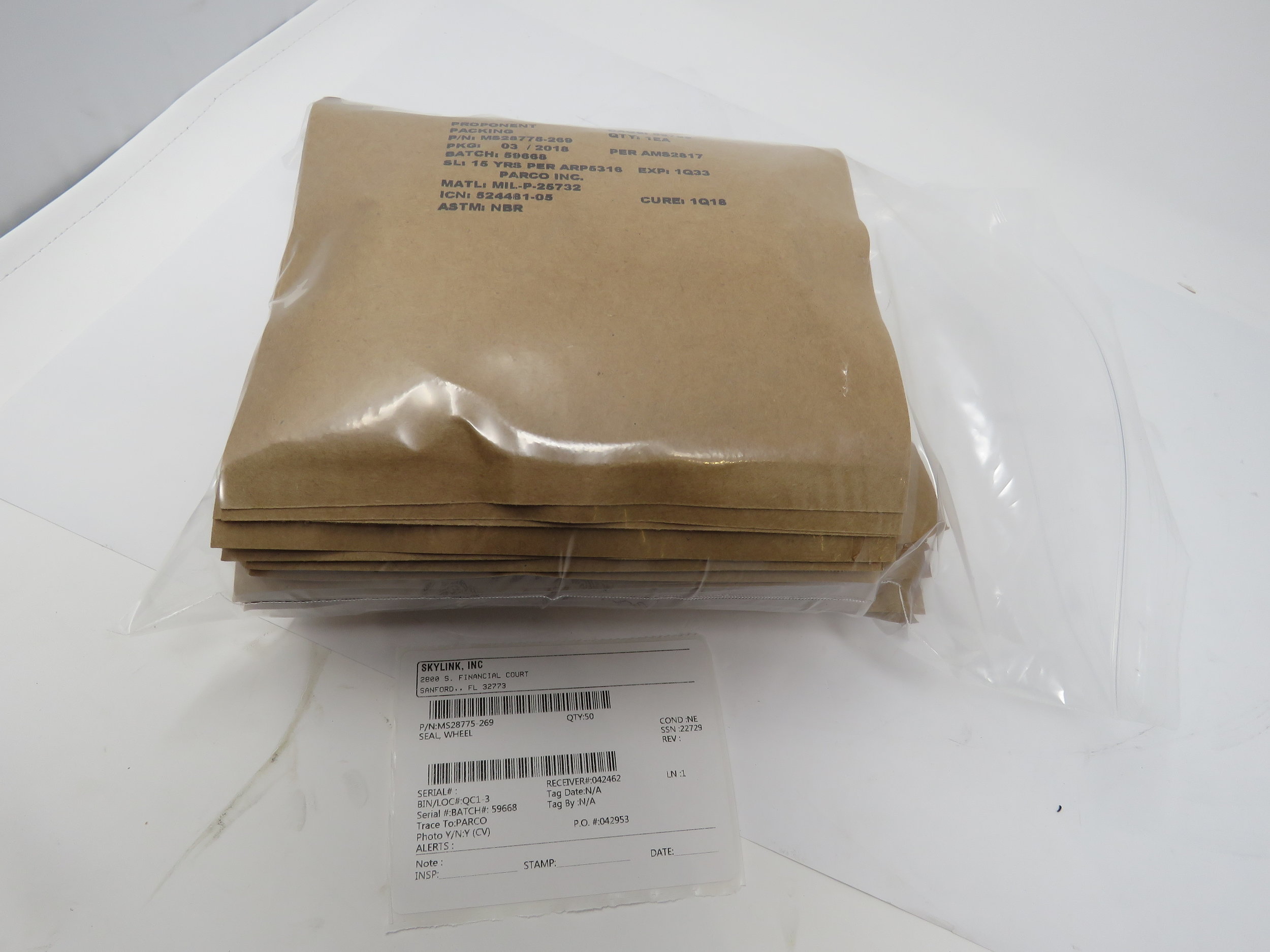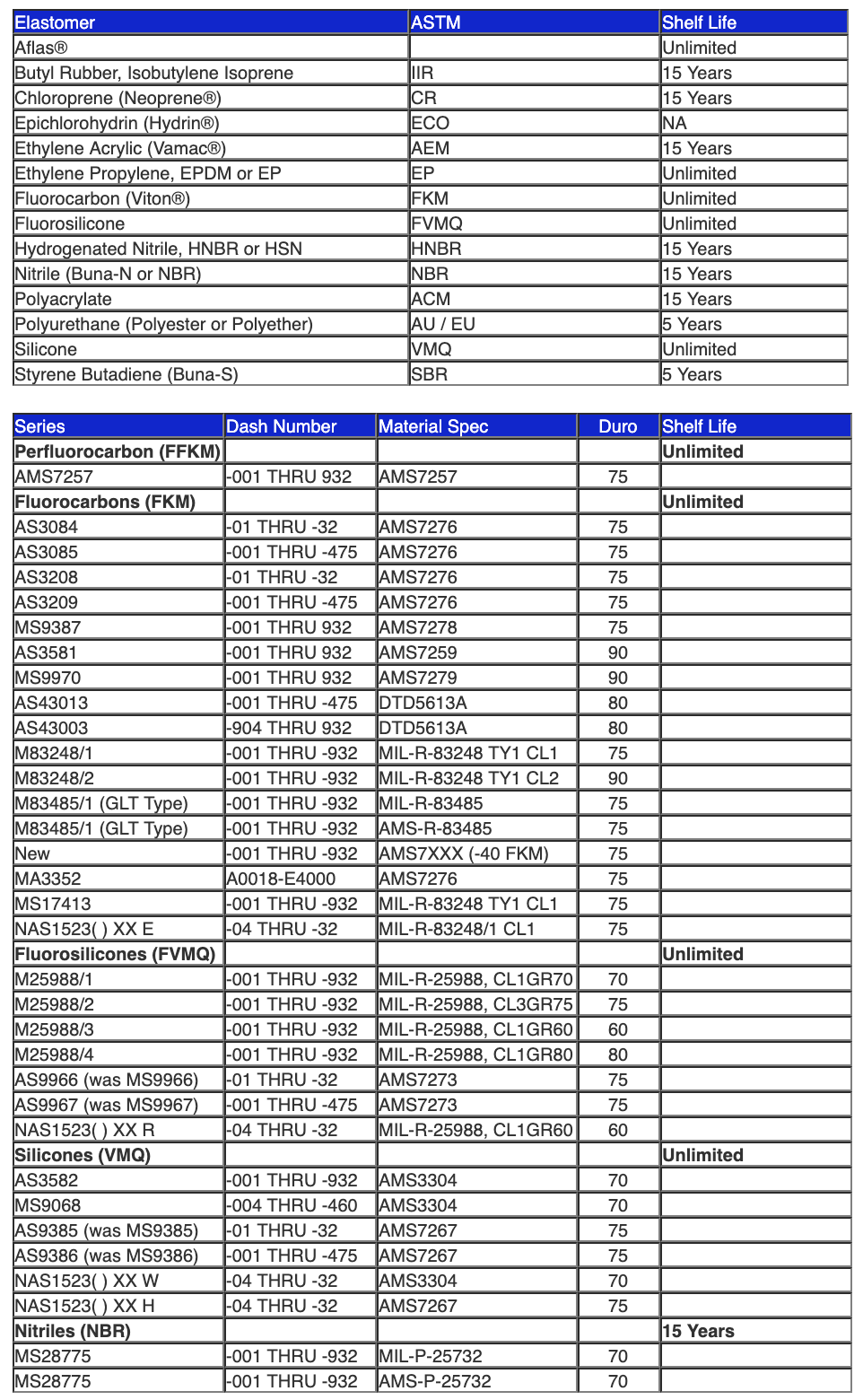The aircraft o-rings we bought were as good as garbage.
We purchased multiple line items of consumable material to support an aircraft maintenance project we were handling.
And the o-rings were cracking and stiff.
The supplier didn’t confirm the shelf life for their o-rings, leaving us with a pile of garbage (literally) and wasted time.
It’s always best practice to know how much life remaining your o-rings have as you purchase them.
To do this, you need to know the type of elastomer used in the gaskets. Once you have that, you can then quickly determine the o-rings shelf life.
These inexpensive consumables will result in wasted time if you order something that’s expired or not following your o-ring quality assurance standards.
It’s frustrating…
You order $100 of o-rings, pay for shipping, spend time processing and following up on your order, all to have to throw the o-rings away.
Flushing the o-rings and your time down the lavatory isn’t an option.
Let’s avoid that…
A complete guide to aircraft o-ring shelf life
In the charts below, we’ve detailed specific o-rings and their shelf life.
Please bookmark this page and refer to it any time you purchase o-rings.
Most manufacturers utilize the last day of the quarter of cure as the time of production, according to Aerospace Recommended Practice ARP 5316.
This was issued in 1998 to supersede MIL-HDBK-695 as the aerospace industry standard in governing o-rings and molded seals shelf life.
So, yes, it’s old, but it still applies today.
O-Ring Shelf Life Guide
O-Ring USA: https://www.oringsusa.com/html/shelf_life.html
As you use these charts to determine your o-rings shelf life, follow these simple tips to make your future o-ring purchases easier and more efficient for you and your operation.
"A Kickstart Manual To Traceability & Certification Requirements"
New eBook: untangles a web of confusion surrounding an industry standard.Click Here To Download eBook
Follow these simple tips when purchasing aircraft o-rings
Never order o-rings by themselves.
It costs most operations $50 - $250 to process a single Purchase Order. Once you factor in shipping and quality assurance, the cost increases even more.
Think, you need 100 o-rings, and you’re shipping them across the country or the world. Sure you could buy 1,000 to place in inventory for years to come to justify the added processing cost, but what’s the point?
You’re spending more money for nothing.
Someone still has to spend the time to inspect, count, and add the additional quantity into your inventory.
Instead, make it a policy always to order your o-rings with other material.
Here’s a recent scenario where our client took advantage of consolidating their o-ring purchases.
During a recent c-check, a client purchased 80 line items on a single Purchase Order. Of that order, 5 line items were o-rings.
They needed various quantities of 10, 50, 100, 25, and 100.
Consolidating helped simplify the ordering process and made the cost to process their o-rings irrelevant. The shipping cost for these o-rings was then absorbed in a larger freight shipment.
When buying o-rings, consolidate your orders.
Establish boundaries with your o-ring supplier and always ask this question.
When you purchase o-rings, especially from a new supplier, always ask,
“whats the manufactured/cure date?”
Once you have the manufactured date, use this article as a guide to determine how much shelf life is remaining.
Depending on your supplier, they can tell you, but often they won’t know if they don’t specialize in high volume o-ring sales.
As you grow your relationship with your o-ring supplier and procure o-rings often, request them to establish an acceptable minimum shelf life for any o-rings they sell to you.
Another idea is you could tell Skylink not to ship any o-rings with less than 25% shelf life remaining.
Those are some ideas to make o-ring procurement more time efficient and use this article as your go-to guide for determining your o-rings shelf life.
"A Kickstart Manual To Traceability & Certification Requirements"
New eBook: untangles a web of confusion surrounding an industry standard.Click Here To Download eBook






